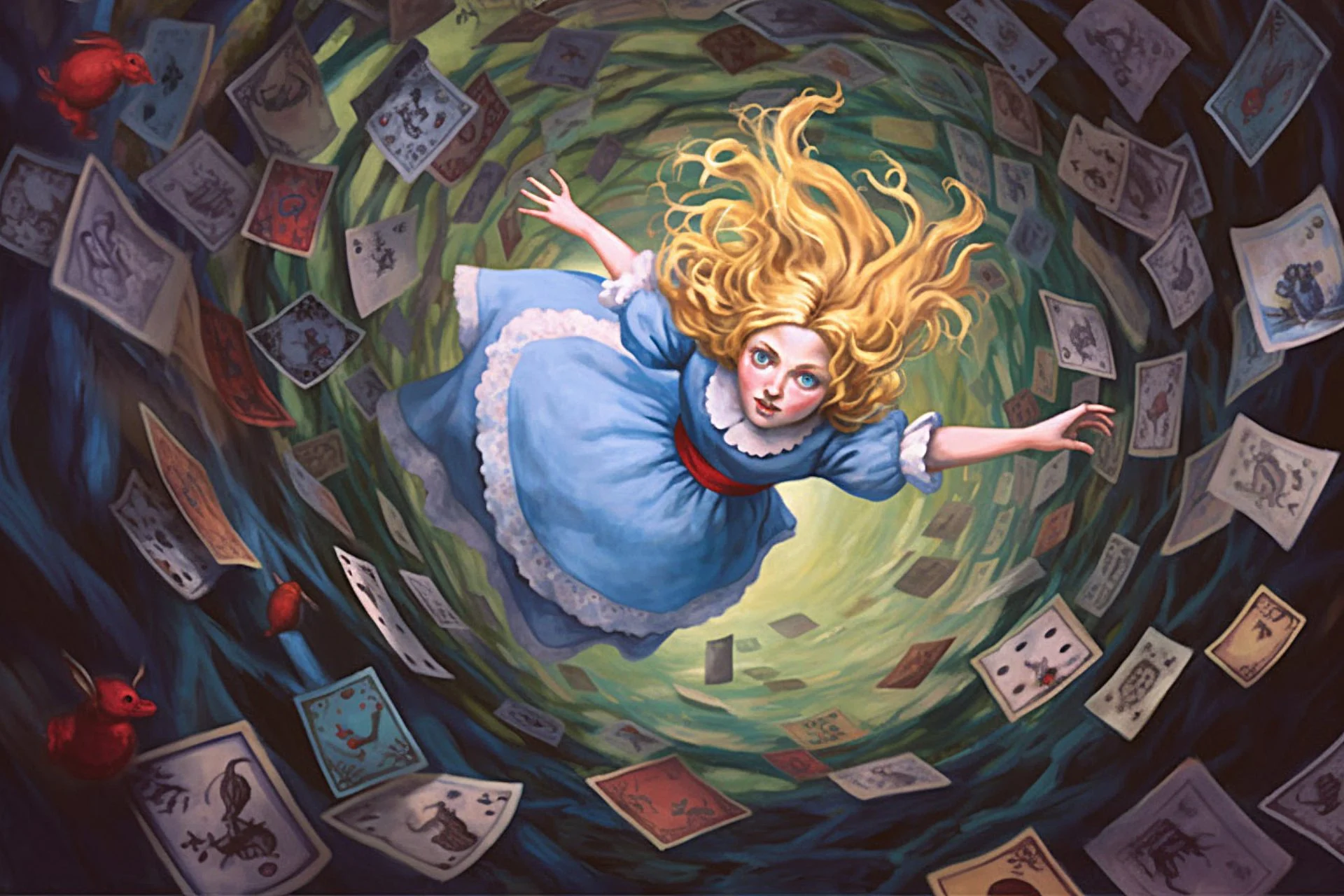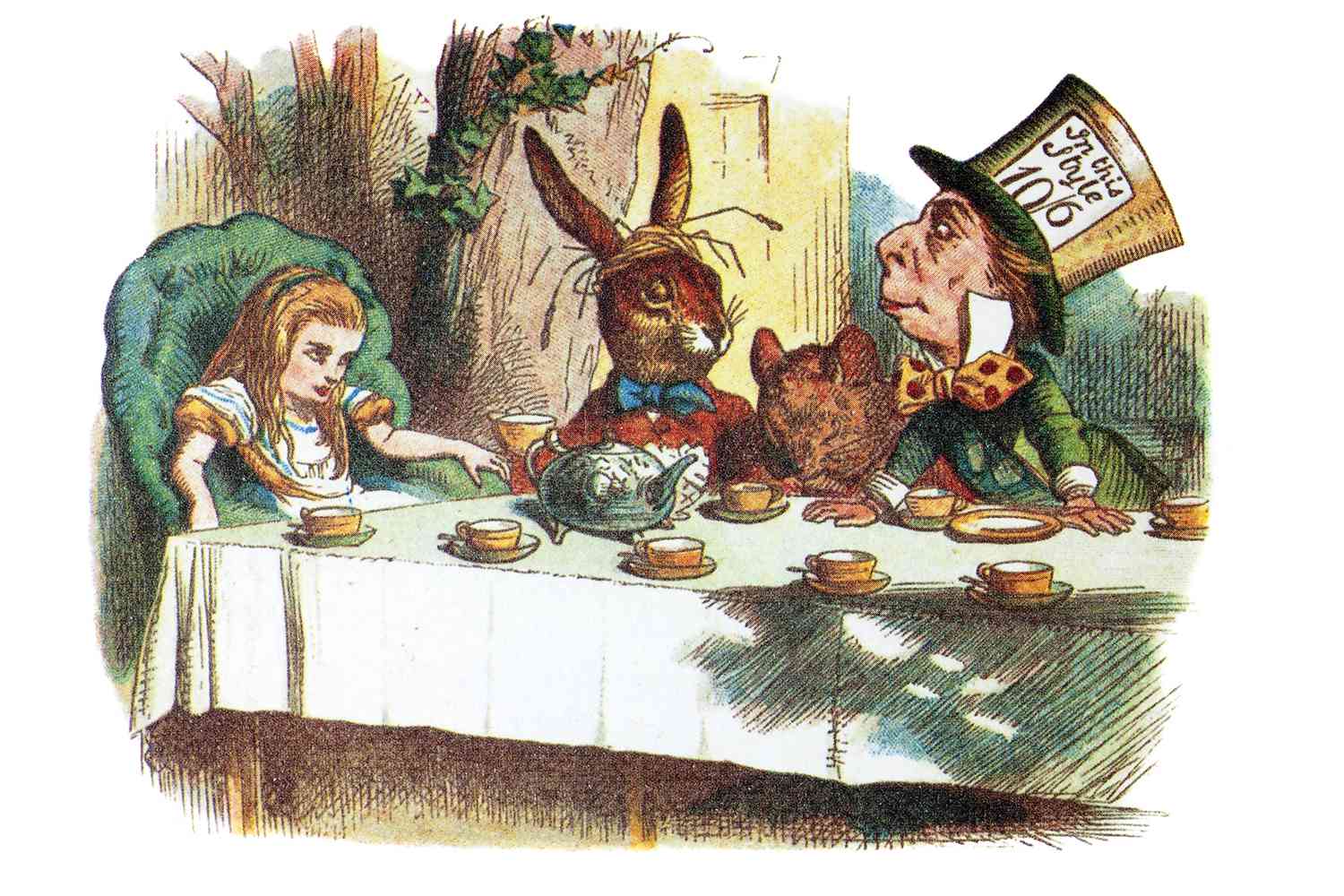Blog
The Dark Secrets Behind Alice in Wonderland: A Journey Beyond the Looking Glass
Lewis Carroll’s *Alice in Wonderland * is often seen as a whimsical children’s tale, but beneath its charming exterior lies a series of unsettling truths and historical oddities. From inspiring a rare neurological disorder to being banned in China, the story’s impact transcends the pages of a children’s book, revealing a darker side that many may not know.
Alice in Wonderland Syndrome: When Reality Warps
One of the most intriguing and eerie facts about *Alice in Wonderland* is its connection to a neurological disorder named after the novel—Alice in Wonderland Syndrome (AIWS). First identified by Dr. John Todd in 1955, AIWS is a disorienting condition that distorts a person’s perception of reality. Sufferers experience macropsia (where objects appear larger than they are) or micropsia (where they appear smaller), much like the titular character’s experiences of growing and shrinking in the story. This syndrome doesn’t just affect vision; it can also distort the perception of time, sound, and space, leading to a dreamlike, often frightening, experience.
Interestingly, Lewis Carroll himself is believed to have suffered from this syndrome. Carroll, whose real name was Charles Lutwidge Dodgson, documented in his diaries that he experienced severe migraines and hallucinations, symptoms closely related to AIWS. Some scholars argue that his personal battles with these disorienting episodes influenced the surreal nature of *Alice in Wonderland*, making the novel not just a work of fiction, but a reflection of Carroll’s own fractured perception of reality.
The Real Alice: A Friendship Turned to Folklore
Behind the story of Alice’s adventures is the true tale of Alice Liddell, a young girl who inspired the character. Born in 1852, Alice Liddell was the daughter of Henry and Lorina Liddell, who befriended Charles Dodgson. Dodgson, an Oxford mathematician and writer, frequently spent time with the Liddell family, entertaining Alice and her sisters with stories and photography. It was during one of these outings that the story of Alice’s adventures was first told, later immortalized in the manuscript titled *Alice’s Adventures Under Ground*, which Dodgson gave to Alice as a gift.
The relationship between Dodgson and Alice Liddell has been the subject of much speculation and analysis. While many see it as a harmless friendship, others have questioned the nature of their bond, especially given Dodgson’s intense fascination with photographing young girls. The ambiguity surrounding their relationship has only added to the mystique and controversy surrounding the story.
>>> Buy now: Alice in wonderland Black blue Disney Unisex Cartoon Custom Baseball Jersey Personalized Shirt Men Women
The Mathematical Wonderland: Carroll’s Hidden Equations
Lewis Carroll was not just a writer but also a mathematician, and his love for the subject subtly influenced the structure of Alice in Wonderland. The story is laced with mathematical references and puzzles, some of which are hidden in plain sight. For instance, the dialogue between Alice and the caterpillar has been interpreted as a nod to algebraic concepts, while the Mad Hatter’s nonsensical riddles may allude to the burgeoning field of symbolic logic.
Moreover, characters like the Cheshire Cat and the Queen of Hearts have been linked to mathematical theories. The Cheshire Cat’s enigmatic grin, which remains after his body has vanished, has been compared to the concept of limits in calculus. Meanwhile, the Queen’s insistence on executing people before their trials could be seen as a satirical take on the rigid logic and rules of Victorian mathematics.
A Soup Fit for a Mock Turtle: Victorian Food and Fiction
One of the more bizarre characters in the story is the Mock Turtle, a creature that mournfully explains the process of making “mock turtle soup.” This oddity was inspired by a real dish popular in Victorian England, which substituted the expensive and rare turtle meat with cheaper ingredients like calf’s head. The idea of creating a creature based on a dish reflects Carroll’s playful, yet critical, approach to the absurdities of his time.
Banned in China: When Talking Animals Cross the Line
While Alice in Wonderland is beloved by many, it has not always been well-received around the world. In 1931, the novel was banned in China by the Governor of Hunan Province. The reason? The book depicted animals talking and behaving like humans, which the authorities deemed inappropriate and potentially misleading for children. The ban reflects the cultural and political sensitivities of the time, where any form of anthropomorphism was seen as a threat to social order.
The Legacy Continues: From Page to Screen and Beyond
Over the years, Alice in Wonderland has been adapted countless times, each version adding its own twist to the tale. The first film adaptation came in 1903, a silent film that attempted to capture the surreal nature of the book in just 12 minutes. Since then, the story has been reimagined in numerous ways, most notably by Walt Disney in 1951. Although the Disney version is now iconic, it was initially a box office failure, criticized for “Americanizing” a quintessentially British story. It wasn’t until years later, with television reruns, that the film gained the popularity it enjoys today.
The Influence of Alice: From Nabokov to Modern-Day Psychology
The influence of *Alice in Wonderland* extends far beyond literature and film. Vladimir Nabokov, the author of the controversial novel *Lolita*, was a great admirer of Carroll’s work. Nabokov even translated *Alice in Wonderland* into Russian, and the novel’s whimsical style is said to have influenced his own writing, particularly in *Lolita*. The complex, often uncomfortable relationship between Humbert Humbert and Lolita has drawn comparisons to Dodgson’s relationship with Alice Liddell, adding another layer of controversy to both works.
In modern psychology, Carroll’s exploration of identity, perception, and reality has been analyzed extensively. The book is often cited in discussions of dissociative identity disorder (DID) and the fluidity of self, with Alice’s constant questioning of who she is serving as a metaphor for the fragmented self.
>>> Read more: Jerry Jeudy Ready to Go Big in the New Season
Alice in Wonderland is more than just a children’s book; it’s a cultural artifact that continues to fascinate, disturb, and inspire. From its links to neurological disorders to its controversial history and mathematical puzzles, the story of Alice’s adventures is as complex and mysterious as the mind of its creator. As we continue to explore the depths of this classic tale, one thing is clear: the legacy of Alice in Wonderland will endure, continuing to captivate and challenge audiences for generations to come.

